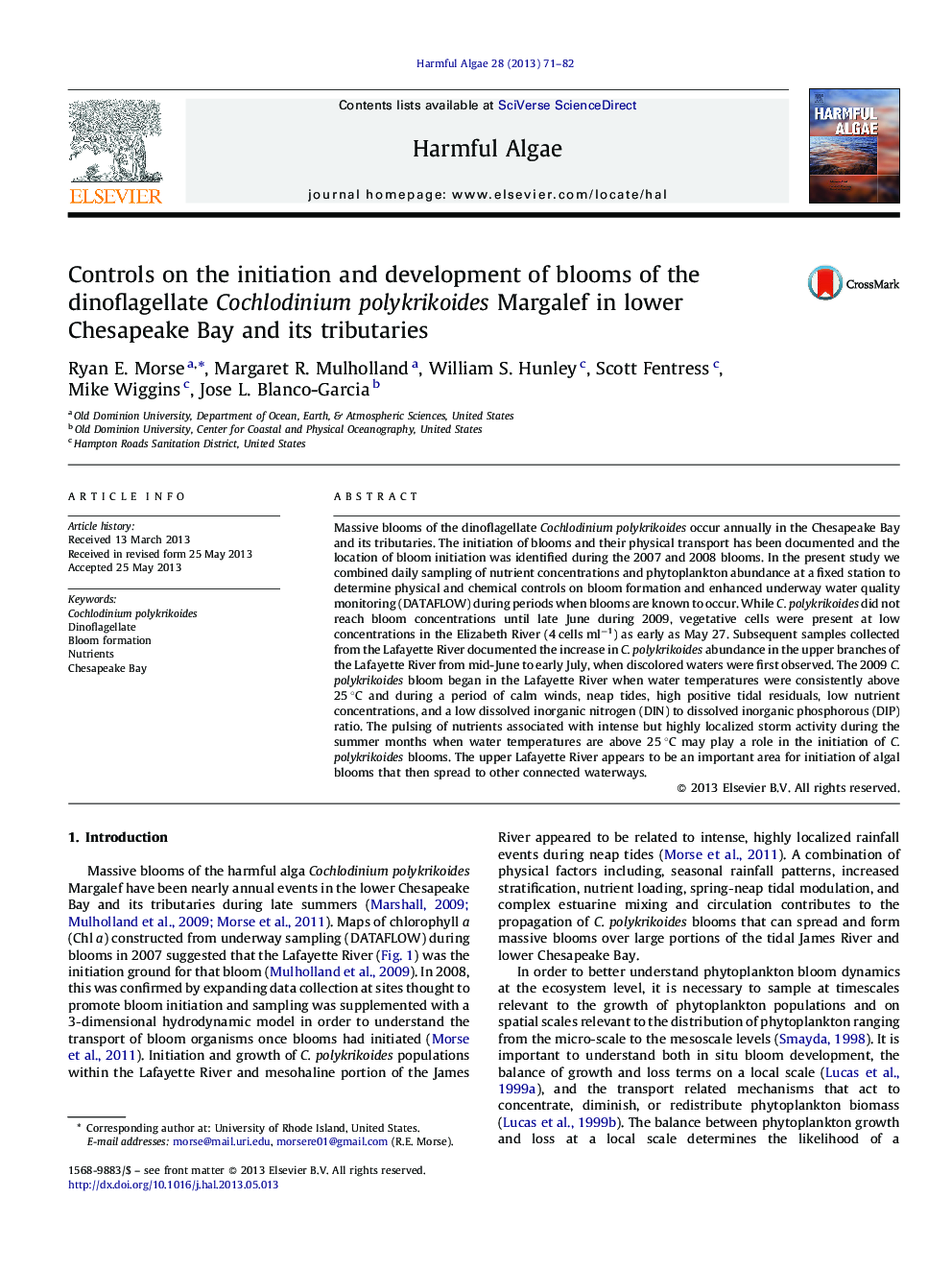| Article ID | Journal | Published Year | Pages | File Type |
|---|---|---|---|---|
| 4545451 | Harmful Algae | 2013 | 12 Pages |
•We combined daily sampling and high-spatial resolution mapping to examine bloom formation.•Dinoflagellate species succession was controlled by temperature and nutrient availability.•The Cochlodinium polykrikoides bloom was associated with low DIN and high DIP concentrations.•Blooms appear to initiate annually in the Lafayette River, a small tributary to Chesapeake Bay.•Local circulation patterns affect the transport and timing of system-wide blooms.
Massive blooms of the dinoflagellate Cochlodinium polykrikoides occur annually in the Chesapeake Bay and its tributaries. The initiation of blooms and their physical transport has been documented and the location of bloom initiation was identified during the 2007 and 2008 blooms. In the present study we combined daily sampling of nutrient concentrations and phytoplankton abundance at a fixed station to determine physical and chemical controls on bloom formation and enhanced underway water quality monitoring (DATAFLOW) during periods when blooms are known to occur. While C. polykrikoides did not reach bloom concentrations until late June during 2009, vegetative cells were present at low concentrations in the Elizabeth River (4 cells ml−1) as early as May 27. Subsequent samples collected from the Lafayette River documented the increase in C. polykrikoides abundance in the upper branches of the Lafayette River from mid-June to early July, when discolored waters were first observed. The 2009 C. polykrikoides bloom began in the Lafayette River when water temperatures were consistently above 25 °C and during a period of calm winds, neap tides, high positive tidal residuals, low nutrient concentrations, and a low dissolved inorganic nitrogen (DIN) to dissolved inorganic phosphorous (DIP) ratio. The pulsing of nutrients associated with intense but highly localized storm activity during the summer months when water temperatures are above 25 °C may play a role in the initiation of C. polykrikoides blooms. The upper Lafayette River appears to be an important area for initiation of algal blooms that then spread to other connected waterways.
